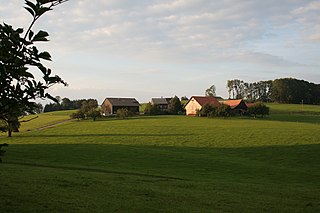
BIOS is non-volatile firmware used to perform hardware initialization during the booting process, and to provide runtime services for operating systems and programs. The BIOS firmware comes pre-installed on a personal computer's system board, and it is the first software to run when powered on. The name originates from the Basic Input/Output System used in the CP/M operating system in 1975. The BIOS originally proprietary to the IBM PC has been reverse engineered by companies looking to create compatible systems. The interface of that original system serves as a de facto standard.
In computing, booting is starting up a computer or computer appliance until it can be used. It can be initiated by hardware such as a button press or by software command. After the power is switched on, the computer is relatively dumb and can read only part of its storage called read-only memory (ROM). There, a small program is stored called firmware. It does power-on self-tests and, most importantly, allows accessing other types of memory like a hard disk and main memory. The firmware loads bigger programs into the computer's main memory and runs it. In general purpose computers, but additionally in smartphones and tablets, optionally a boot manager is run. The boot manager lets a user choose which operating system to run and set more complex parameters for it. The firmware or the boot manager then loads the boot loader into the memory and runs it. This piece of software is able to place an operating system kernel like Windows or Linux into the computer's main memory and run it. Afterwards, the kernel runs so-called user space software – well known is the graphical user interface (GUI), which lets the user log in to the computer or run some other applications. The whole process may take seconds to tenths of seconds on modern day general purpose computers.
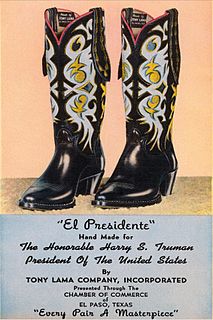
A boot is a type of footwear and not a specific type of shoe. Most boots mainly cover the foot and the ankle, while some also cover some part of the lower calf. Some boots extend up the leg, sometimes as far as the knee or even the hip. Most boots have a heel that is clearly distinguishable from the rest of the sole, even if the two are made of one piece. Traditionally made of leather or rubber, modern boots are made from a variety of materials. Boots are worn both for their functionality – protecting the foot and leg from water, extreme cold, mud or hazards or providing additional ankle support for strenuous activities with added traction requirements, or may have hobnails on their undersides to protect against wear and to get better grip; and for reasons of style and fashion.
A boot is a type of footwear.
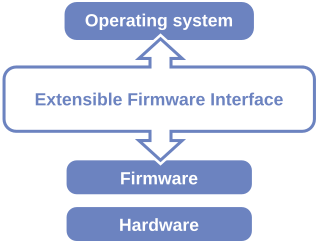
The Unified Extensible Firmware Interface (UEFI) is a specification that defines a software interface between an operating system and platform firmware. UEFI replaces the Basic Input/Output System (BIOS) firmware interface originally present in all IBM PC-compatible personal computers, with most UEFI firmware implementations providing legacy support for BIOS services. UEFI can support remote diagnostics and repair of computers, even with no operating system installed.
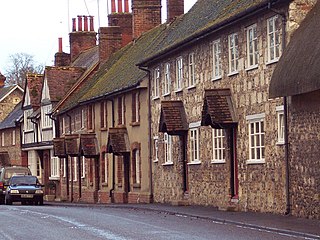
Berwick St James is a village and civil parish on the River Till in Wiltshire, England, about 7 miles (11 km) northwest of Salisbury, on the southern edge of Salisbury Plain. The parish includes the hamlet of Asserton. At the 2001 census the parish had a population of 185, reducing to 142 at the 2011 census.

Boot is a small village in Eskdale, Cumbria, in the Lake District of England. It forms part of the Borough of Copeland.
German submarine U-269 was a Type VIIC U-boat of Nazi Germany's Kriegsmarine during World War II. The U-boat was laid down on 18 September 1941 by Bremer Vulkan at Bremen-Vegesack, launched on 24 June 1942 and commissioned on 19 August under the command of Oberleutnant zur See Karl-Heinrich Harlfinger.

Willington is a village and civil parish, about 9 miles (14 km) from Chester, in the unitary authority of Cheshire West and Chester and the ceremonial county of Cheshire, England.

Houghton is a small village and civil parish in the Test Valley district of Hampshire, England. The village is situated alongside the River Test. Its nearest town is Stockbridge, which lies approximately 1.8 miles (3 km) to the north-east. The village is a dispersed linear settlement, mostly strung out along the single road through the village, which broadly follows the course of the River Test north-south. Houghton is dominated by substantial agricultural/sporting estates at each end, the Houghton Lodge estate to the north and the Bossington estate to the south. Each owns a number of properties in the village.
German submarine U-1021 was a Type VIIC/41 U-boat of Nazi Germany's Kriegsmarine during World War II.

Sugartown is an unincorporated settlement in central Willistown Township, Chester County, Pennsylvania, United States, at the intersection of Sugartown and Boot Roads. It is located 18 miles west of Philadelphia.

Dalegarth railway station is the easterly terminus of the 15" gauge Ravenglass & Eskdale Railway in Cumbria. It has a café and shop for passengers, along with a run-round loop, turntable and siding for trains. It is located next to the Whillan Beck, a tributary of the River Esk flowing from the isolated Burnmoor Tarn.
Oliver Boot is an English actor. He trained at the RADA, and has appeared on both stage and screen. His theatre credits include Antony and Cleopatra, In Extremis, Three Musketeers, Hayfever, Tartuffe, Jamaica Inn and an award winning world tour of Othello with Cheek by Jowl. He has starred as Demetrius in Shakespeare's A Midsummer Night's Dream and as Ventidius in Timon of Athens, at the Globe, in London.
German submarine U-714 was a Type VIIC U-boat Nazi Germany's Kriegsmarine built for service during World War II. She was laid down on 29 December 1941 by H. C. Stülcken Sohn at Hamburg and commissioned on 10 February 1943. She was commanded throughout her career by Hans-Joachim Schwebcke.
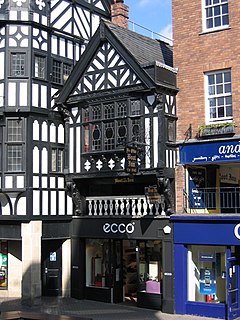
The Boot Inn is at 17 Eastgate Street and 9 Eastgate Row, Chester, Cheshire, England. It is recorded in the National Heritage List for England as a designated Grade II* listed building. The building consists of a shop occupying a former undercroft at street level, above which is a public house at the level of the Row and above.
German submarine U-258 was a Type VIIC U-boat of Nazi Germany's Kriegsmarine during World War II. She was laid down at the Bremer Vulkan yard at Bremen-Vegesack on 22 February 1941 as yard number 23. She was launched on 13 December and commissioned on 4 February 1942.
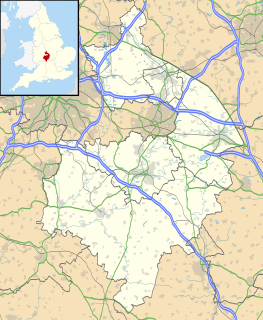
Mappleborough Green is a small village and civil parish in Warwickshire, in the non-metropolitan district of Stratford-on-Avon.

The Boot is a public house in St Albans, Hertfordshire, England. Located in the centre of the city, it is near the site of the First Battle of St Albans. According to St Albans Gohst Lore ( Muriel Thresher and Beryl Carringtpn 1987ISBN0 901104 07 7 pub bySt Albansand Hertfordshire Archaeological society c/o Verulamium museum It was known as the Old Wellington pub formerly the Blue Boar.
The 1916 Prime Minister's Resignation Honours were awards announced on 22 December 1916 to mark the exit of Prime Minister H. H. Asquith, who resigned in early December.
